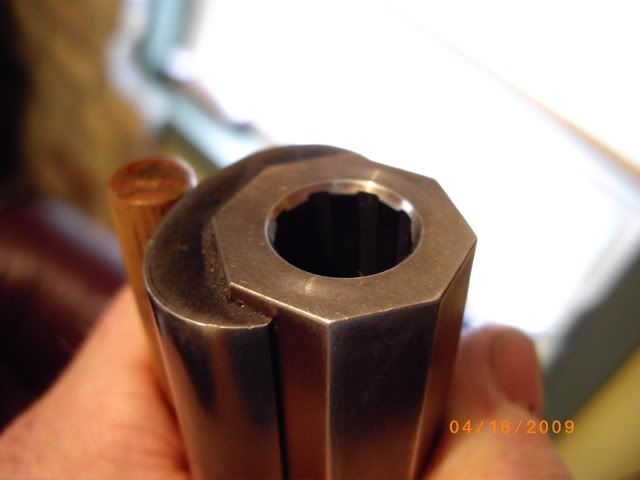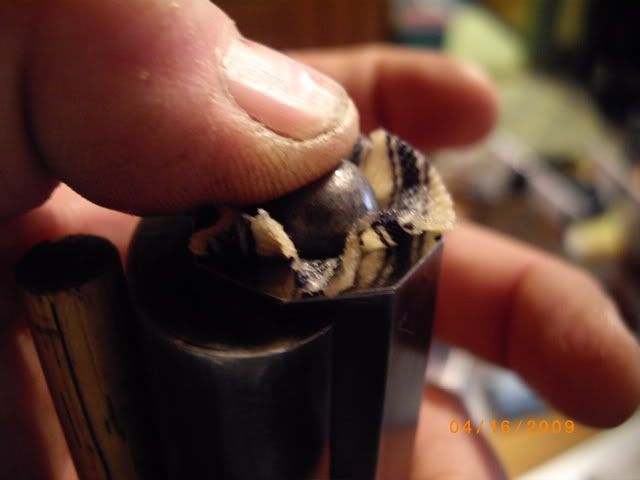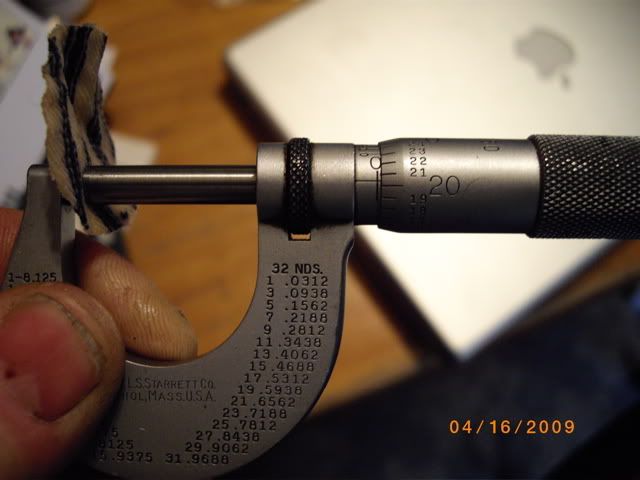Think about what you are asking a fabric patch to do:
1. Center the ball in the bore, and hold it in place in the barrel;
2. seal gases behind the ball so that the ball is not cut or melted by hot gases, blowing by;
3. clean the bore as the PRB is loaded; and
4. lube the bore with grease or oil and wax from the patch, so that fouling is kept soft after the shot is fired, and keep the lead ball from rubbing lead off on the bore as it moves down and up the bore, preventing lead streaks.
If the ball diameter is too small for the patch thickness used, its not going to do a very good job of either centering the ball in the bore, or sealing gases, and it may not be held in place in the barrel very well, either.
If the patch fabric is too thin for the ball diameter in that bore, it simply can't carry enough LUBE to adequately clean or grease the bore, much less serve as an adequate firewall.
You can transfer the duties of sealing the bore from your patch choice by using OP wads to seal the gases, and provide a 'FIREWALL' to protect that thin patch from burning. That allows you to use a thinner patch than many actually give better accuracy, so that you can load the gun faster IN THE FIELD. There is no need to Load fast at the range.
You have to know the bore diameter, in Thousandths of an inch, as well as the Ball diameter you intend to use, to make some kind of reasoned decision on what size thickness a patch should work best. Then you try several thicknesses, READ the spent patches, and let the gun tell you what is working and what isn't.
If you are using too big a ball, and too thin a patch, just to get it down the bore, without the OP wads providing a seal, the Spent Patch will be burned, or torn in shreds, or show black streaks advancing in front of the ring where the patch is wedged between the ball and bore. Accuracy will be poor.
General advice, always subject to change, depending on Gauge or bore (caliber) diameter, in smooth bores, is to choose a ball diameter that is .020" smaller than bore diameter. Then choose a fabric patch that is at least .015" thick, expecting compression of the cotton fabric to give a good seal around the bore, and enough fabric to carry enough lube to create a "firewall", as well as lube the bore, etc.
Sometimes, you can't find standard size ball molds that provide that correct relationship between ball diameter and bore diameter. You can choose a smaller bore, and use thicker patches, or order a custom mold to cast the size ball you need.
Some people shoot bare balls( almost- as most of them dip the plain lead balls into a wax/oil lube and let the lube dry before the ball is fired)that are fairly close to bore diameter, and omit the fabric patch all together. They use OP wads, or TOW, or some other kind of wadding between the powder charge, and the ball to provide some kind of seal. They use similar "stuff" on top of the ball to hold the ball in place inside the barrel.
They expect the soft lead to " bump up" in diameter and fill the bore on firing, thereby overcoming the lack of "centering of the ball" that using a fabric patch would provide.
If they lube the bore ahead of the BALL, the grease will prevent lead from rubbing off inside the bore, and adversely affecting accuracy as it builds up in the barrel. Other wise, they accept " Minute of barn door groups", and just limit the range at which they shoot RBs from their guns.
If you understand where you are trying to go, and then analyze how you will get there, you can quickly understand the advantages and disadvantages of any choices you make in how you load that ball in your gun. There are consequences for everything you do when loading your gun- some good and some bad. LEARNING TO READ your spent patches is the quickest route to solving the problems. :hmm: :hatsoff:



